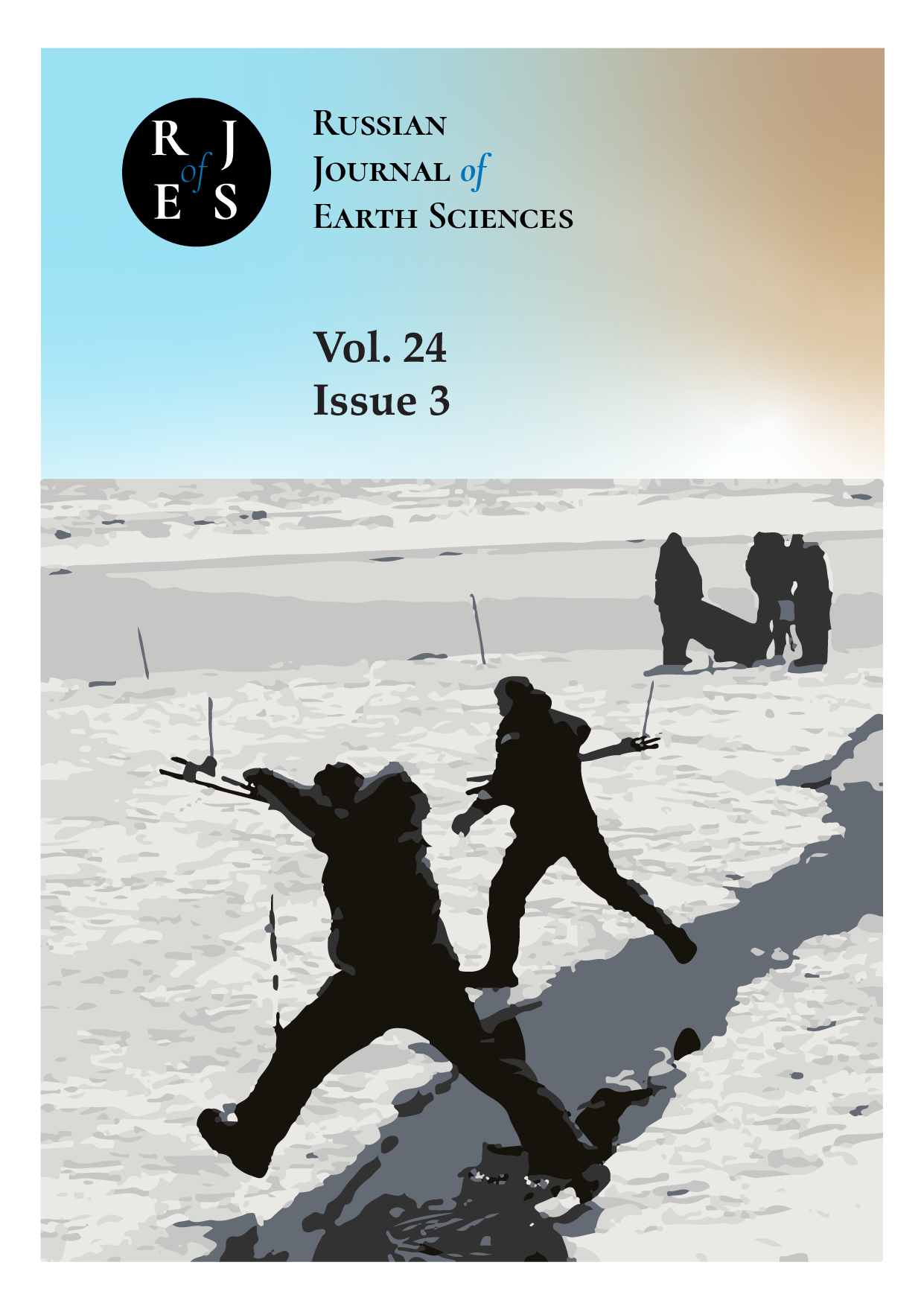from 01.01.1994 to 01.01.2024
Moscow, Moscow, Russian Federation
Russian Federation
UDC 551.46.09
UDC 551.46.07
UDC 55
UDC 550.34
UDC 550.383
CSCSTI 37.01
CSCSTI 37.15
CSCSTI 37.25
CSCSTI 37.31
CSCSTI 38.01
CSCSTI 36.00
CSCSTI 37.00
CSCSTI 38.00
CSCSTI 39.00
CSCSTI 52.00
Russian Classification of Professions by Education 05.00.00
Russian Library and Bibliographic Classification 26
Russian Trade and Bibliographic Classification 63
BISAC SCI SCIENCE
This article describes a new, efficient, and quick method for conducting field measurements to create a three-dimensional model of ice formations. The method involves the use of a total station geodetic instrument, a powerful LOZA georadar, and an unmanned aerial vehicle with a camera. The technique is especially useful for measuring unstable ice formations with horizontal dimensions ranging from 50 to 300 meters. Examples of applying this method during winter fieldwork on the Sakhalin Island's eastern shelf in 2019 are provided.
field measurements of ice characteristics. ice formations, 3-dimensional model, georadar LOZA, unmanned aerial vehicle
1. Astafyev, V. N., G. A. Surkov, and P. A. Truskov (1997), Ice ridges and stamukhas of the Sea of Okhotsk, 208 pp., ProgressPogoda, St. Petersburg (in Russian).
2. Borodkin, V. A., A. S. Paramzin, and S. V. Khotchenkov (2018), Joint use of a multirotor-type unmanned aerial vehicle and a round-view sonar to create a three-dimensional digital model of the relief of an ice object, Russian Polar Research, 34(4), 31–35 (in Russian), EDN: https://elibrary.ru/THMFJF.
3. Eltner, A., A. Kaiser, C. Castillo, G. Rock, F. Neugirg, and A. Abellán (2016), Image-based surface reconstruction in geomorphometry - merits, limits and developments, Earth Surface Dynamics, 4(2), 359–389, https://doi.org/10.5194/ESURF-4-359-2016.
4. GOST R 58283-2018 (2018), Petroleum and natural gas industries. Arctic operations. Account of ice actions in designing the offshore platforms, 36 pp., Standartinform, Moscow (in Russian).
5. Koci, J., B. Jarihani, J. X. Leon, R. Sidle, S. Wilkinson, and R. Bartley (2017), Assessment of UAV and Ground-Based Structure from Motion with Multi-View Stereo Photogrammetry in a Gullied Savanna Catchment, ISPRS International Journal of Geo-Information, 6(11), 328, https://doi.org/10.3390/ijgi6110328. EDN: https://elibrary.ru/YFTVIL
6. Mironov, Ye. U., Yu. P. Gudoshnikov, and V. N. Smirnov (2015), Current methods of ice studies and explorations on the shelf of the Arctic Seas, Problemy Arktiki i Antarktiki, 103(1), 57–68 (in Russian), EDN: https://elibrary.ru/TXNZVX.
7. Morozov, P. A., A. I. Berkut, P. L. Vorovsky, F. P. Morozov, and S. V. Pisarev (2021), Measuring sea ice thickness with the LOZA georadar, Russian Journal of Earth Sciences, 21(4), 1–9, https://doi.org/10.2205/2021ES000767. EDN: https://elibrary.ru/QDRZTX
8. Pisarev, S. V. (2016), Winter expeditionary research in the water area of the Yuzhno-Kirinskoye field in 2016, Russian Polar Research, 25(3), 8–11 (in Russian), EDN: https://elibrary.ru/SFDZBK.
9. Pisarev, S. V., and A. S. Tsvetsinskiy (2021), One year old layered ice on the shelf of the Sakhalin Island. The problem of identification and a potential threat to offshore structures, in GEOEURASIA-2021. Geological exploration in modern realities, pp. 232–235, PoliPRESS (in Russian), EDN: https://elibrary.ru/PLDRMQ.
10. World Meteorological Organization (WMO) (2014), WMO Sea-Ice Nomenclature. WMO No. 259, WMO, Geneva.















